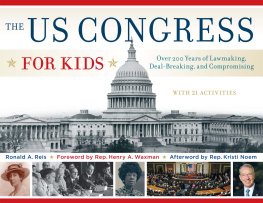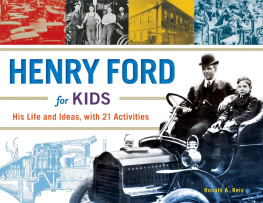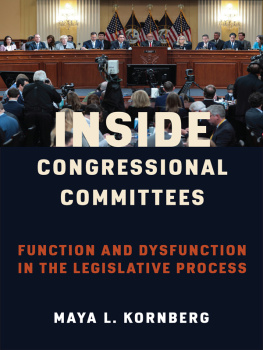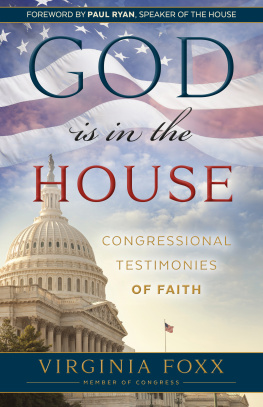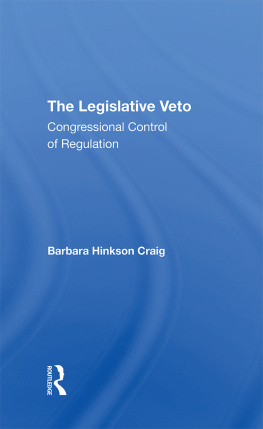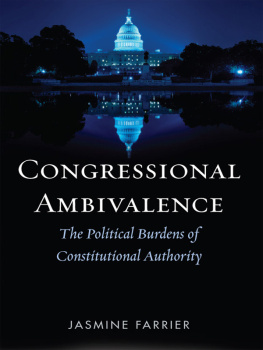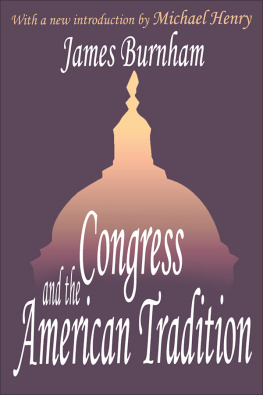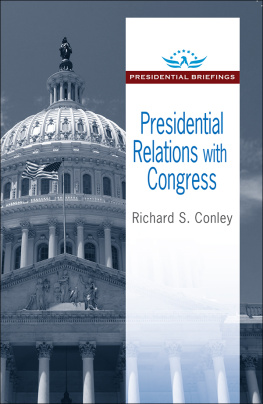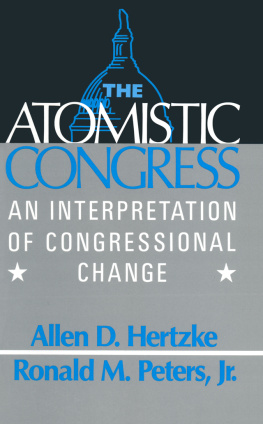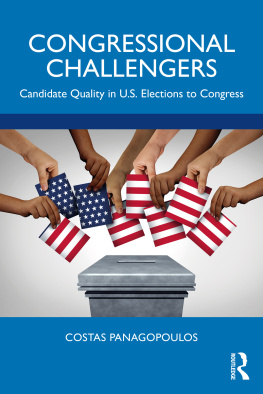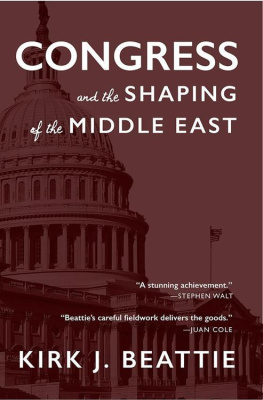

2014 by Ronald A. Reis
All rights reserved
Foreword copyright 2014 by Henry A. Waxman
All rights reserved
Afterword copyright 2014 by Kristi Noem
All rights reserved
First edition
Published by Chicago Review Press, Incorporated
814 North Franklin Street
Chicago, Illinois 60610
ISBN 978-1-61374-977-7
Library of Congress Cataloging-in-Publication Data
Reis, Ronald A.
The US Congress for kids : over 200 years of lawmaking, deal-breaking, and compromising, with 21 activities / Ronald A. Reis ; foreword by Henry A. Waxman ; afterword by Kristi Noem.
pages cm. (For kids series)
Summary: With a focus on dramatic stories, personalities, and turning points, and accompanied by educational, hands-on activities, The US Congress for Kids helps children understand how the government functions and why it mattersProvided by publisher.
ISBN 978-1-61374-977-7 (paperback)
1. United States. CongressJuvenile literature. 2. Legislative bodiesUnited StatesJuvenile literature. 3. Legislative powerUnited StatesJuvenile literature. 4. Creative activities and seat workJuvenile literature. I. Title.
JK1025.R45 2014
328.73dc23
2014017480
Cover and interior design: Monica Baziuk
Interior illustrations: Jim Spence
Cover images (Front, clockwise from top): Capitol building, Library of Congress LC-USZ62-121528; Portrait of Jeannette Rankin, Library of Congress LC-cph 3a11030; Senator Sam Ervin chairs the Senate Select Committee, Wally McNamee/CORBIS; Congresswoman Shirley Chisholm announcing her candidacy for the presidential nomination, WL008829; (RM) US-POLITICS-OBAMA-STATE OF THE UNION, 161726936; Senator Chuck Grassley, Courtesy of Chuck Grassley. (Back, left to right) Five students were detained after staging a sit-in at US Senator John McCains office in support of the DREAM Act, courtesy Wikimedia Commons; Judge Bork, Bettmann/CORBIS U87308102; Senator Elizabeth Warren, Courtesy of Senator Elizabeth Warren; US Senate in Chaos, Library of Congress LC-DIG-ppmsca-29117; A group of activists at the National American Woman Suffrage Association parade held in Washington, DC, March 3, 1913, Library of Congress LC-DIG-ggbain-11400; Illustration by Jim Spence.
Printed in the United States
5 4 3 2 1
CONTENTS

INDEX
ACKNOWLEDGMENTS
T hank you to LaVergne Rosow and Lauren Okayama for your helpful activity suggestions. Thank you Dale Beck, my first editor, who is always there. Thank you Ellen Hornor, editorial assistant at Chicago Review Press, for your quick responses to my inquiries. And, of course, a special thanks to Lisa Reardon, senior editor at Chicago Review Press, for all your encouragement and professionalism. Finally, a special debt of gratitude to my wife, Karen, for all you do in aiding my writing efforts.
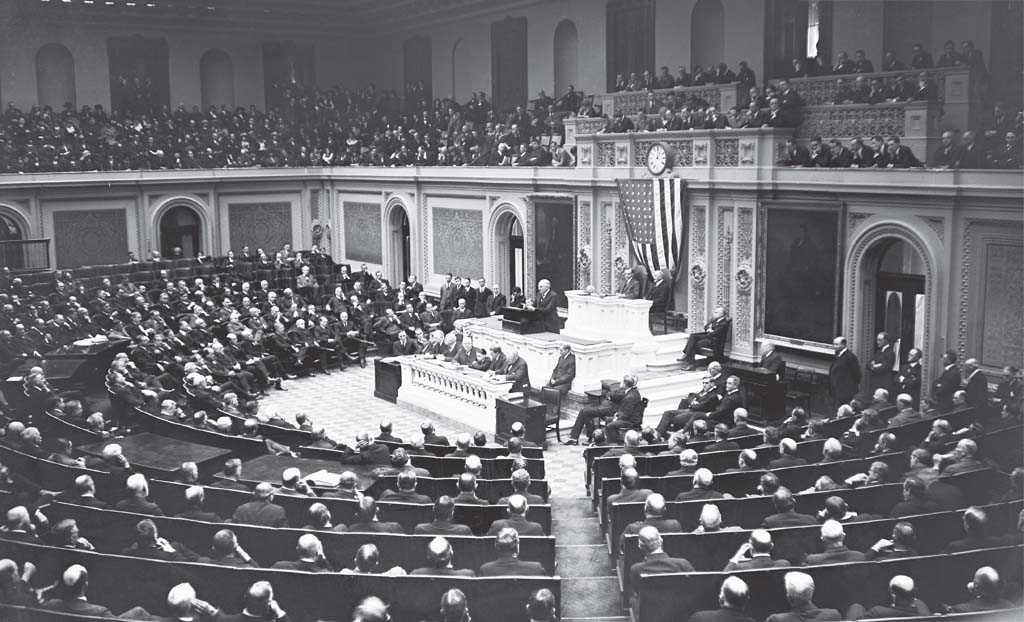
FOREWORD
I ts an exciting time to learn about Congress and our government. Congress truly is a body of the people, by the people, and for the people. Together, members of Congress represent the entire nation, bringing with them a range of diverse backgrounds, interests, and experiences to make decisions on behalf of the American people.
The Constitution confers great power upon Congress to govern. Throughout history, the work of the Congress has greatly changed the nation. It abolished slavery and created new federal programs under President Roosevelts New Deal to bring the country out of the Great Depression. It passed civil rights laws to end racist practices and established environmental protections to guarantee the safety of the air we breathe and the water we drink. It changed the landscape of national security after September 11 and passed landmark health care reform to provide better health care to all Americans.
Many of the most important figures in our nations history have been members of Congress. Approximately half of this countrys presidents served in Congress. Many members of the Cabinet, including secretaries of state, served in Congress. Even Davy Crockett was a member of Congress from Tennessee.
The legislature is the branch of government that most directly allows you to participate and have your voice heard. Your member of Congress carries your voice to Washington and fights for you and your families. When you begin voting at age 18, you can choose the best candidate to represent your interests. And when you turn 25, you can run for Congress yourself and make important choices for your country.

F ORMER C ONGRESSMAN H ENRY A. W AXMAN served for 40 years in the House of Representatives, representing Los Angeless Westside. The congressman was known as a tireless author of bills and negotiator of deals. He retired with the end of the 113th Congress, effective January 2, 2015.
INTRODUCTION
O pinion poll after opinion poll continues to show that the majority of Americans do not like their Congress very much. When questioned about their individual representative or senator, they are less inclined to be critical; they feel the man or woman they have sent to Congress is doing an OK job. Not a great joban OK job. Of the three branches of governmentthe legislative (Congress), executive (the president and all agencies under his or her control), and judicial (the courts)it is the legislative, the one that makes the laws, that gets the lowest approval ratings. And yet, our founding fathers considered Congress to be the most important of the three branches. That is why they listed it first when crafting the US Constitution.
This book has been written in the hopes of showing you, despite all the criticism, what an amazing institution Congress is. For 225 years it has given us the democracy we cherish. It was there to overthrow slavery, challenge executive branch authority, give women the right to vote, make major strides in civil rights, and provide the necessary advice and consent rulings, among many other major achievements. As you will see, the working of Congress has never been smooth. With so much national diversity on so many issues, it is unrealistic to expect that lawmaking would proceed on an orderly path. Congress, as a representative institution, reflects our messy, confrontational lives. Yet, the alternative is an authoritarian form of government that freedom-loving people will never endorse. If, in completing this book, you gain a better understanding of the US Congress along with an appreciation for the positive good it has done, you will be on your way to becoming better equipped to understand American history as it unfolds today.

Capitol Hill is in the center of the picture, with congressional office buildings to the right and the left. Library of Congress LC-DIG-highsm-4879
TIME LINE
Next page
